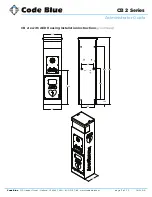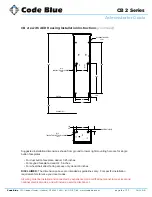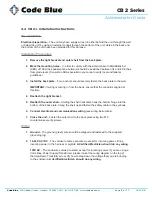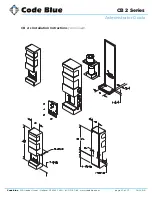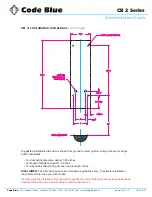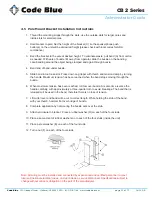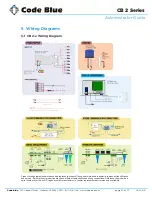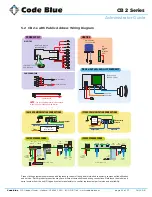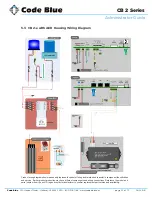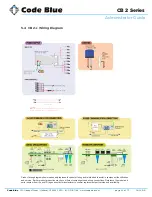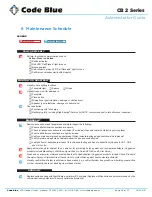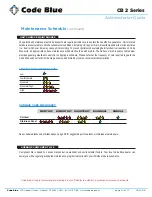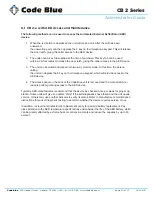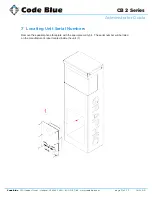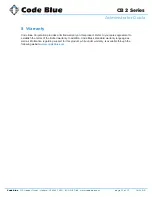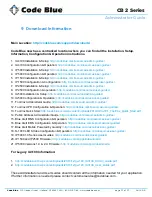
Code Blue
•
259 Hedcor Street
•
Holland, MI 49423 USA
•
800.205.7186
•
www.codeblue.com
GU-149-B
page 30 of 33
CB 2 Series
Administrator Guide
6.1 CB 2-e with AED Access and Maintenance
The following methods can be used to access the Automated External Defibrillator (AED)
device:
1.
When the red button is depressed the unit will make a call. After the call has been
answered,
the answering party can then depress the 6 key on their telephone keypad. This will release
the door latch, giving the caller access to the AED device.
2.
The units have a key fob supplied at the time of purchase. This key fob can be used
within a 20-foot radius to release the door latch, giving the caller access to the AED device.
3.
The unit can be called and placed into two-way monitor mode. At this time, the person
calling
the unit can depress the 6 key on their telephone keypad, which will provide access to the
AED device.
4.
The access panel on the back of the Code Blue unit is removed and the manual latch re-
lease is pulled, granting access to the AED device.
Typically, AED manufacturers recommend that the device be checked once per week for proper op
-
eration. Some units will give an audible “chirp” if the self-diagnostics have failed and the unit needs
service. Others may use another indicator to verity its status. Refer to manufacturer’s maintenance
instructions for correct diagnostic testing to ascertain whether the device requires service or not.
In addition, review the manufacturer’s replacement policy for pad and battery replacement. Pay
close attention to the AED temperature specifications and consider the life of the AED battery, which
can be greatly affected by extreme heat or cold environments and reduce the capacity by up to 50
percent.


